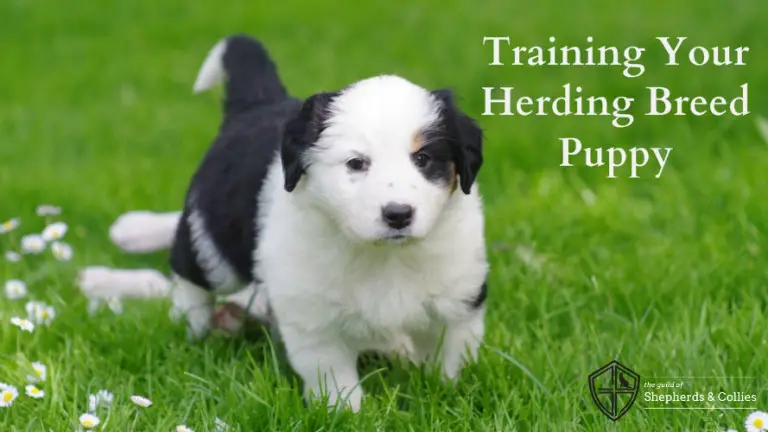Herding Breed Puppies: Know the Basics Before the Training
A common question from many proud owners with a new herding breed dog litter is, “what is the correct age to start training?” Starting either too early or too late can negatively impact the dog’s ability to reach its full potential as a herder. Another common enquiry is regarding the types of activities and exercises that very young pups can be taught before the actual training begins. However, before asking these questions, it’s best to understand a few pre-training basics of raising herding breed puppies ...
Pre-training Tips
The Bond:
A good herding dog is the perfect harmonization of an inherent hunting instinct and their responsiveness to the pack leader, or in other words, the human handler. A lot hinges on this crucial relationship between the dog and its owner, and training that fosters and strengthens this bond can begin with a pup of any age.
Basic Discipline and Rewards:
With gentle commands and plenty of rewards, a young puppy can be taught obedience, alertness and basic discipline. He can be introduced to the highly rewarding and trusting relationship of working with a partner.
Exploring New Situations:
A young dog can be taught that it is ok to explore and satiate his curiosity. He can be taught to confront new and possibly fearful situations, with the handler by his side to offer encouragement and reassurance.
Keeping Your Herding Dog Healthy is vital whether you plan to keep him as a home companion or train him as a herding champion.
Physical Maturity
With regard to the actual training, the two most important aspects are physical and mental maturity. Herding dogs need to be physically fit and well-toned, with a good amount of muscle mass. They must be able to run fast, turn quickly, and sometimes even leap to get out of harm’s way. A serious injury at a young age can sometimes permanently impair a dog’s career as a herder. Injuries can also take place during pre-training play. It is, therefore, important to ensure that the physical activities of young puppies are very light and entirely age appropriate. Regardless of breed, most dogs’ bones are not fully developed until they are over a year old. Watch the young dog carefully for signs of fatigue and allow them to have plenty of time to rest.
Guild Evangelist, Rachel Sheppard, Provides Tips on Preventing Injury in Your Athletic Herding Dog
Mental Strength
Mental maturity is very important aspect in your herding dog’s confidence, enthusiasm and capability of being a reliable assistant. Based on breed characteristics and individual traits, young dogs take differing lengths of time to develop mental maturity. The progression from pre-training and largely play-focused activities to learning the ropes of actual training, must be gradual and paced according to the dog’s temperament and ability. A sudden shift from play to hard-core training can leave a dog discouraged, emotionally fatigued, and ultimately too lethargic to obey commands. Always start a young dog with a docile or well-broken herd that are accustomed to obeying a herding dog without challenge. A young pup that is injured or challenged by an unruly herd could lose his confidence and motivation, which will require extensive re-training.
For anyone who loves herding breed dogs and is up for the challenge, training a herding dog puppy is sure to be a very fun and satisfying experience. To see a plump little bundle of fur transformed into an athletic, confident and skilled canine companion on a ranch or farm is a reward in itself.
Read more on Tips for Raising Your Herding Breed Puppy from Guild Author Sarah Dykes, a Certified Dog Behavior Consultant.
Article By:
Grace Stephen







